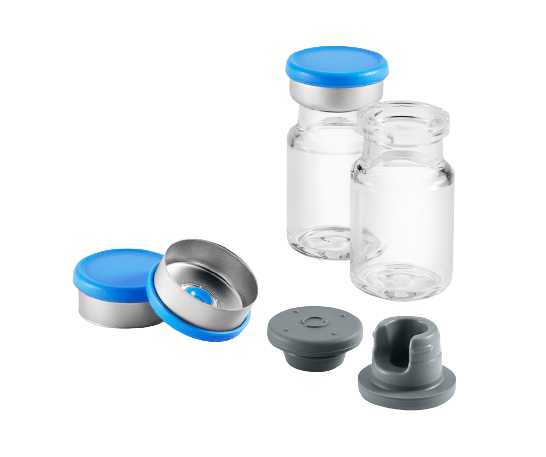Key considerations for selecting packaging solutions for cell and gene therapies
It is an exciting time to be in the Cell and Gene therapy industry. The astounding growth and development we have witnessed in the cell & gene therapy industry over the last decade is bringing life-changing therapies to the patients who have been so anxiously awaiting them.
At the same time, as with any new drug class, challenges that may not have been considered during the drug development phase may suddenly show up and stand in the way of overcoming that last hurdle: Packaging and delivering your precious new molecule to the patient.

You might be new to delivering drugs because your therapy is first in its class; or you might be a seasoned pharmaceutical professional that has always worked with other types of molecules. The bottom line is that a therapy that involves cells or genes is a very different beast from a small molecule, a peptide, or even a protein therapy. You need to think about its special needs early and often in order to safeguard it all the way from development until it reaches the patient.
Doing so will minimize your risk of not meeting timelines or staying within budget, and most importantly, it will minimize risks to the safety and efficacy of your gene therapy drug product…from the bench to the patient.
What are the risks of not considering packaging early and often?
- Compromised safety and efficacy: cell and gene therapies are highly sensitive to factors like particles and leachables, so meeting the tightest industry material and container closure integrity (CCI) specifications is absolutely critical.
- Loss of expensive product upon breakage of vials: your therapy is significantly more expensive than traditional therapies. Loss of even one vial could be very damaging to your bottom line.
- Loss of product to the container: cells and genes are more likely to interact with surfaces than other types of molecules. Not considering the type of material that your containers are made of could result in significant product loss.
What sets Crystal Zenith® components apart for Cell and Gene Therapies?
Proven maintenance of CCI at ultra-low temperatures
One common struggle for cell and gene therapies is their temperature sensitivity. Drug companies with products that can be stored at room temperature or even at 4°C do not need to worry about the dramatic physical property changes that materials like elastomers and glass undergo at extremely low temperatures, leading to loss of CCI or cracking upon thawing.
When you use our Ready Pack™ containment solution with Crystal Zenith® (CZ) Vials, NovaPure® stoppers and Flip-Off® Clean, Certified, Sterilized (FOCCS) seals, you have data that shows that CCI is maintained across multiple freeze and thaw cycles down to -180°C.
To dive more deeply into this data, see the following technical reports and presentations in our knowledge Center:
- Performance of Daikyo’s Crystal Zenith® 2 mL Vials at Cryogenic Temperatures: Container Closure Integrity and Cell Preservation.
- Ingress of Gases into Cyclic Olefin Polymer Vial-Based Container Closure Systems at -80 °C.
- Challenges in Low-Temperature Storage of Cell Therapy Drug Products.
Improved particle and leachable specifications and break resistance
Another advantage that Crystal Zenith® components have over glass for highly sensitive drug molecules like cell and gene therapies is that they are made of cyclic olefin polymer (COP). COP is not only a break resistant material, which reduces the risk of losing product during transportation, but it also meets tighter particulate specifications (1) and has fewer leachables (2). Both particulates and leachables are concerns that must be considered early in the drug development phase in order to reduce the risk of losing precious time to market.
Data demonstrating particle counts from CZ vials that are less than one other plastic vial tested, as well as less than 10% of the USP threshold, is shown in this study (1). For this study, two different stoppers were used and comparable results between them were seen. Subscribe to our blog here to be notified when the full technical report on CZ particulate counts is posted.
For more general information on use of Daikyo’s Crystal Zenith® Cyclic Olefin Polymer, please read our whitepaper: Overcoming Challenges in Cell and Gene Therapy Containment
Improved viral vector recovery over glass vials.
Crystal Zenith Vials demonstrate higher viral vector recovery post thaw than glass.
In general, it is observed that viral vectors do not stick to CZ vials.
CZ Vials demonstrate lower risk of interaction with drug and high compatibility with drug product. Check out our technical report, Functional Assessment of Adeno-associated virus stored in Daikyo Crystal Zenith® Vials at ultra-cold temperatures, in our knowledge center.
Bottom Line
Cell and Gene therapies have a set of very specific containment needs that, if not considered early and throughout the development process, could lead to significant delays and product losses. Whether you are a small biotech that is new to delivering therapies, or a big pharma company looking to utilize the best containment system for a new type of molecule, you will need a partner that combines decades of experience with forward thinking innovation. West and Daikyo have been able to validate their established Crystal Zenith® material as an effective way to deliver your unique product to patients with an eye on both safety and efficacy.
Click here to learn more about containment solutions for cell and gene therapies.
Ready Pack, NovaPure, and Flip-Off are trademarks or registered trademarks of West Pharmaceutical Services, Inc. In the United States and other jurisdictions.
Crystal Zenith is a registered trademark of Daikyo Seiko, Ltd. Crystal Zenith technology is licensed from Daikyo Seiko, Ltd.
References
- Comparison of Particles in Daikyo Crystal Zenith® Vials, Glass Vials, Polypropylene Screw Top Vials and Cryogenic Bags. Daikyo Crystal Zenith® Technical Report 2022/038
- Alternative for SARS-CoV-2 Vaccine Primary Package Systems: Daikyo Crystal Zenith® Cyclic Olefin Polymer Vials. D. DeCou, W. Garzon-Rodriguez, M. Gehrmann, P. Frandolig, P. McAndrew. (published online – September 2, 2020) https://www.westpharma.com/en/blog/2020/September/sars-cov-2-vaccines-alternative-vial-components



